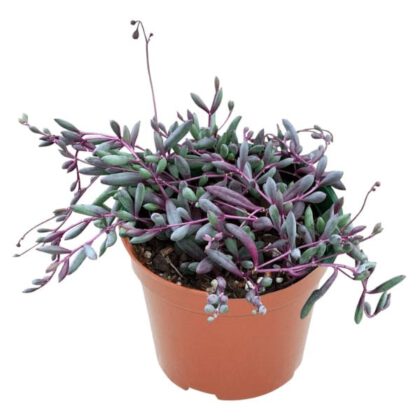Plant Care
- Light: Kalanchoe laxiflora thrives in bright, indirect light. It can tolerate some direct sunlight, especially in the morning or late afternoon, but avoid harsh midday sun to prevent leaf burn.
- Watering: Allow the soil to dry out completely between waterings. Water thoroughly when the soil is dry, but be careful not to overwater, as this can lead to root rot.
- Soil: Use a well-draining cactus or succulent mix. A mixture of potting soil, sand, and perlite or pumice works well to ensure good drainage.
- Temperature: Kalanchoe laxiflora prefers temperatures between 60-75°F (16-24°C). It is not frost-tolerant and should be protected from temperatures below 50°F (10°C).
- Humidity: This plant prefers low to moderate humidity levels. High humidity can promote fungal diseases, so maintain good air circulation around the plant.
- Fertilization: Fertilize once a month during the growing season (spring and summer) with a diluted, balanced fertilizer. Avoid fertilizing in the winter when the plant is dormant.
- Container: Use a container with drainage holes to prevent water from accumulating at the bottom. Terracotta pots are ideal as they allow for better moisture evaporation.
- Pruning: Prune to remove dead or damaged leaves and to shape the plant as needed. Pinching back the tips can encourage bushier growth.
- Propagation: Propagate through leaf or stem cuttings. Allow cut ends to callus for a few days before planting in a well-draining soil mix. Propagation can also be done through offsets.
- Pests: Watch for common pests like aphids, mealybugs, and spider mites. Treat infestations with insecticidal soap or neem oil. Regular inspection helps catch pest problems early.
- Support: Kalanchoe laxiflora has a sturdy growth habit and typically does not require additional support. Ensure it has enough space to grow and spread naturally.




